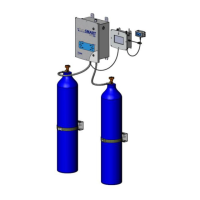pg. 18
APPENDIX A
Cloud-Based Architecture
DataSmart is a cloud-based system. This means that there is no dedicated computer required in your company
to collect and store the data. Each machine requires a wireless internet connection in order to report
production data. DataSmart initiates the transfer of information through a firewall to the data center. Data is
transferred directly from DataSmart. Production data is accessible using a web browser and a secure login.
Security and Data Storage
Each DataSmart customer’s data is stored in a state-of-the art data center. When viewing the DataSmart
application, high-security, industry-standard encryption is used. The hosting center is a SSAE 16 SOC 2 Type
II compliant facility. SSAE 16, also called Statement on Standards for Attestation Engagements 16, is a
regulation created by the Auditing Standards Board (ASB) of the American Institute of Certified Public
Accountants (AICPA) for redefining and updating how service companies report on compliance controls.
It is an acceptable method to obtain assurance of a service organization’s internal controls without conducting
separate assessments. Successful completion of the SSAE 16 SOC 2 Type II examination indicates that the
processes, procedures, and controls have been formally evaluated and tested by an independent auditing firm.
A service auditor’s examination performed in accordance with SSAE 16 SOC 2 Type II (Trust Principles) is
widely recognized. It represents that a service organization has been through an in-depth audit of their control
objectives and control activities, which often include controls over information technology and related
processes. A Type II report not only includes the service organization’s description of controls but also includes
detailed testing of the design and operating effectiveness.
The hosting center environment is built with state-of-the-art equipment, technology investments, and
operational expertise. There is an established disaster recovery program with redundancy and fail-over to
protect the information stored in the system.
Access Requirements
Each computer or mobile device must have access to the Internet to connect to DataSmart. All DataSmart
machines require access to the Internet to send data to the DataSmart data center. Every DataSmart machine
is identified by a unique device ID. This ID number is saved during registration and sent with each DataSmart
data packet to store the data. Refer to Chapter 2 Preparing for CheckPoint® for additional information.
Accessing Data
Access to company data is limited to DataSmart users assigned to a Company by that Company’s
Administrator. A user can be assigned to multiple Companies and will have access to each Company’s data
each time they log in. Depending on the User Role provided by the Administrator, the user may have access to
Equipment Configuration and User Management settings.
Network Capacity
Networks and Internet connections have limited bandwidth for sending data. Each DataSmart machine uses a
small amount of bandwidth. To estimate the bandwidth on your network, you can multiply the number of
DataSmart machines by the data quantity of data packets:
Every 5 minutes, each DataSmart machine sends a data frame to the DataSmart data center; the data
packet is about 68 Bytes in size.
The data frames use most of the available bandwidth. When estimating bandwidth, allow at least 10%
for additional occasional traffic and other network communications. If the network or Internet connection
is lost, the DataSmart machine continues to collect and buffer data until the network connection is re-
established. Once the Internet connection is reestablished, all the data is sent to DataSmart.

